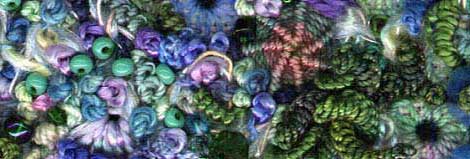Drizzle Stitch
one of the "cast on" group of stitches
![]()
![]()
![]()
This is a variation of cast on stitch and in great fun if you don’t mind threading needles!
Drizzle sitich is used in brazillian embroidery worked in rayon thread but you can use any thread with a good twist such as cotton pearl. Since tension is important, stretch the fabric in an embroidery hoop or frame. Also this stitch is easier to work if you use a use a milliner's or straw needle as the shaft of the needle is the same diameter as the eye and this means you can slide the stitches along the needle easily in the second phase of the stitch.
For all my you should do this and that it is not that hard to work and more than makes up for its fiddliness with effect.
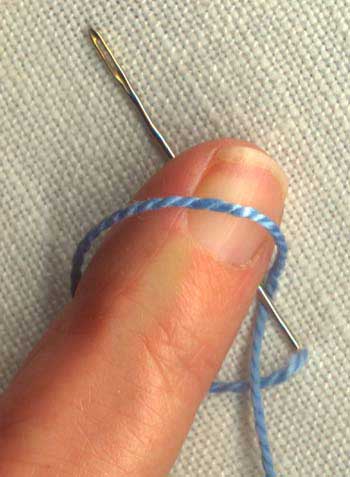 step 1
step 1
First bring the needle to the front of the fabric and partly make a tiny stitch bringing the needle out of the fabric close to where the thread emerged initially.
Next you take the thread out of the needle but leave the needle in the fabric. I know this is counter intuitive to anyone who sews but it is what you do
Place the thread over your left index finger rotate your finger keeping the thread still over your finger but under slight tension. This movement should create a loop around your finger.
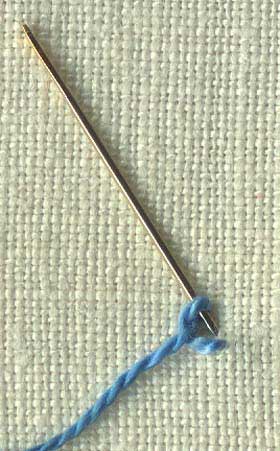
step 2
Hold the point of the needle at the back of the fabric with your right hand and transfer the loop from your left hand first finger to the needle.
Slide the loop down the needle. This is the first cast on stitch.
This looping action and transferring the loop to the needle, is similar to casting on a stitch on a knitting needle.
Work a number of cast on stitches, gently sliding them down the needle as you go.
Work at least 6 loops if not more. You can work 20 or 30 loops to create long spirals.
step 3

Keep the stitches even on the needle.
When you have the required number of even spaced stitches rethread the needle hold the cast on stitches with your thumb on your left hand and pull the thread with your right hand, through the center of the cast on stitches and continue to pull the thread through the fabric to the back.
Pull firmly but not too tight.
The finished stitch will be free at one end so that it will pop up from the fabric and will coil in a spiral to the base.
The size of the stitch depends upon the number of cast on stitches you use.
The higher the number of cast on stitches the bigger the loop. The thickness of the thread will determine the weight of the stitch.
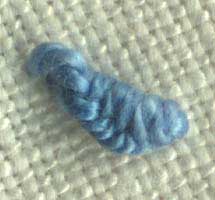
step 4
This is a great stitch for underwater scenes as clusters of the stitch it looks like coral or sea anemones.
It can also be used as it is in brazilian embroidery at the centre of a flower to produce a contrast in texture. This stich also combines well with floral motifs work in Silk Ribbon Embroidery.
Mix this stitch with other textured stitches such as bullion or french knots. It also looks good with stitches such as palestrina or in combinations with needlwork techniques like Castleguidi. It is very effective against a pulled or drawn thread back ground as the contrast is so dramatic.
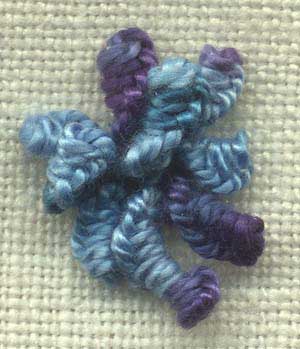
Cast On Group
Other stitches in in this stitch group are:
